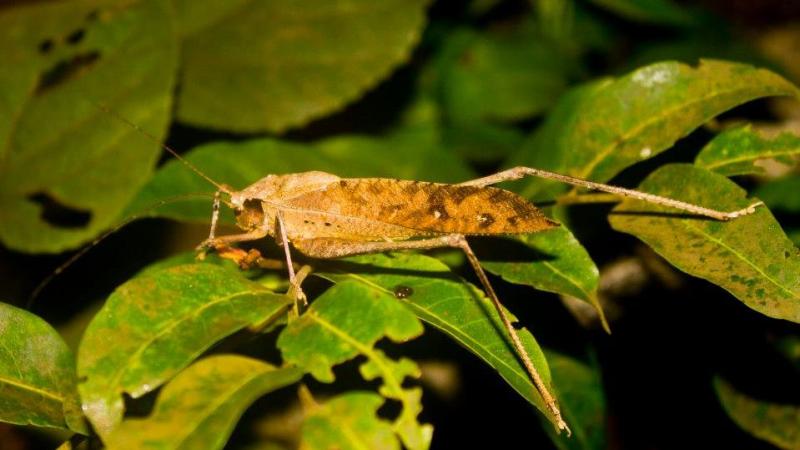
Study throws light on how cryptic bush crickets use acoustic cues as reproductive barrier.
We are familiar with the crickets - loud, chirping black or brown coloured insects - that generally start their orchestra at dusk. These insects, usually males, produce chirping/trilling sound as a mode of communication to attract their mates. In a new study, researchers from the University of Exeter, UK and the Indian Institute of Science, Bangalore, have investigated the divergent populations of bush crickets that have different mating calls and are predominantly found in South India.
“Bush crickets are usually larger and louder than other crickets, as they are broadband (energy spread across wide frequency range) callers. Often the loudest cricket calls that you hear at night from a distance are bush cricket calls” says Dr. Rochishnu Dutta, an ex-PhD scholar at the University of Exeter.
Bush crickets are a family of crickets that are sometimes indistinguishable from each other by just looking at them. These are also called cryptic bush crickets, and the members of these cryptic taxonomic groups often co-exist in nature. Hence, each member must evolve a mechanism that prevents it from breeding with other members of the family (also called isolating mechanisms) to maintain its unique identity. In this study, published in the journal PLOS One, the researchers have studied how bush crickets of the species Mecopoda elongata, found in South India, do it.
The researchers found that the male bush crickets of M. elongata have a set of five different songs, which they sing to attract females, that lack the ability of singing. However, the receptive females respond to the calling males by moving towards them. This movement indicates the receptivity of females, and this phenomenon is called ‘phonotaxis’.
The researchers found that the five mating calls of M. elongata can be broadly divided into two types: ‘chirpers’ that only have chirp component or ‘trillers’ that have trill (continuous chirp without gaps) component. The chirpers are identified as Chirper (that have single chirp) and Double Chirper (that have two short consecutive chirps). The trillers are ‘Two Part’, ‘Helicopter’ and ‘Train’ - the names indicating human perception of the sound these crickets actually produce. “One wing of bush cricket has ‘file’ while the other has ‘plectrum’. When one wing is moved over the other, these two structures meet and rub against each other which creates chirps”, says Dr. Dutta, talking about how these sounds are made. These songs differ in call period, gaps and duration in between chirps that keeps each song types acoustically distinct.
The researchers, using experiments in the laboratory, found that females of ‘Chirper’ song type recognize and prefer their own song type-specific call and completely avoid the other three trilling songs. They showed phonotaxis and mated with their own song type individuals significantly more number of times than that of ‘Double Chirper’. Although some females had a preference for ‘Double Chirpers’ call, this can be attributed to the weak tuning of ‘Chirper’ females and broad acceptance of a range of ‘Chirper’ call parameters, with which the ‘Double Chirper’ calls overlap. Besides, these two bush cricket populations occur in different geographical location in nature that makes inter-song type mating between ‘Chirper’ and ‘Double Chirper’ implausible.
The study concludes that ‘Chirper’ individuals are not only isolated from individuals of the four song types in terms of long distance communication but also mate among themselves. The ‘Chirper’ females’ song preference explains this existing reproductive barrier and as such the ‘Chirper’ can be regarded as a separate cryptic species of Mecopoda elongata.
So, the next time you hear the call of a bush cricket from your garden, find out whether it is a ‘chirp’ or a ‘trill’ and appreciate the acoustic acuity and the secret life of crickets.






